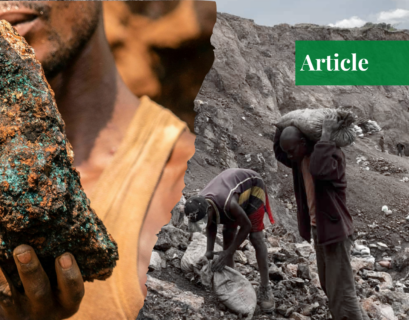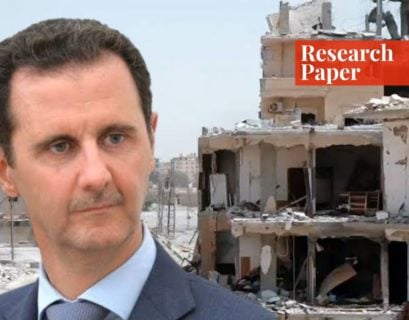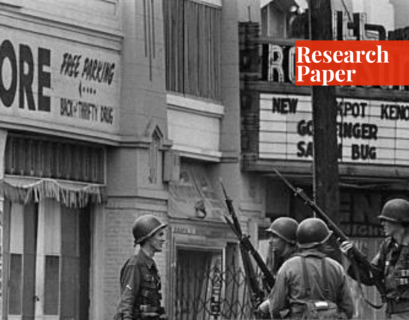Adam Abass is an undergraduate student of political science and international relations. His research focuses on Middle Eastern politics, counter-terrorism, peace, and security in Africa.
Introduction
After nearly two years of armed conflict in eastern Congo, which featured the M23 rebels as a significant non-state actor, a peace agreement was signed between the DRC government and the M23 which brought about some level of relative peace in the country for years. However, a recent upsurge in clashes between the DRC and M23 has emerged and is drawing attention from around the world due to its new dynamics.
Peace Deal
The M23, a CNDP splinter group made up primarily of minority Tutsi rebel fighters, took its name from the March 23, 2009 agreement. They launched an armed uprising against Kinshasa in 2012, accusing the DRC government of being unfaithful to the 2009 agreement that ended the war between the DRC and the former Tutsi-rebel National Congress for the Defence of the People (CNDP).
Underlying grievances experienced by the minority Tutsi tribe were what led to the violent uprising against the Democratic Republic of Congo in 2012. The M23 rebel group captured Goma, a border town with Rwanda with about 1 million civilians, at the height of the conflict, drawing attention from the international community and prompting the deployment of a UN peacekeeping mission.
The Congolese army and the UN peacekeeping forces then jointly launched a large-scale offensive against the group, which led to a bitter concession. A harsh admission of loss on the battlefield forced the group to surrender and leave its acquired territories, including Goma.
The M23 rebels were forced to end the armed insurrection and transform into a political party as a result of the peace agreement, which was initiated by Kinshasa and other regional states in early 2013. The DRC Government also pledged to grant amnesty to the M23 group’s fighters, release war prisoners, and oversee a disarmament and demobilization program for its fighters.
Although there are still some low-level skirmishes from both sides and with other armed groups in the region, the peace deal brought about relative peace in the country after the almost two-decade war of both military interventions from neighboring states and internal civil war. However, the mineral-rich eastern Congo region remains highly volatile.
The Resurgence of the M23 Group
After years of shaky calm, the M23 group returned in late 2021, and in the middle of last year, there was a complete military escalation on both sides in the north Kivu provinces, which sparked the start of yet another Tutsi-led uprising. It is unclear why there has been a recent uptick in fighting between the M23 rebels and the forces for Congo. Some experts speculate that it was because the DRC government was unwilling to fully disarm, demobilize, and reintegrate the M23 rebel fighters as initially agreed in the peace deal.
However, others have suggested that the Rwandan government reignited the conflict after being isolated from the politics of the mineral-rich area when Kinshasa turned toward Uganda and Burundi, a long-standing rival in the struggle for power in the area. Following its comeback, the M23 group embarked on a territorial capturing campaign, taking control of much of North Kivu.
The M23 group was most active in the strategically important town of Rutshuru, and it advanced towards the regional capital Goma. This caused yet another flow of civilians to be displaced to nearby countries in the area. The group’s territorial push is nothing new, but what’s concerning is how aggressively they’ve been seizing territories. The UN Envoy to the region made hints about their military prowess and success, observing that the M23 group now conducts its operations with the same professionalism as a conventional army.
Military sources have suggested that the group has used sophisticated weapons in recent battles against the DRC forces. These weapons include night vision devices and equipment, long-range weapons like mortars and machine guns, as well as precision fire equipment that can target aircraft. The possession of these powerful weapons with the M23 cannot be possible without a powerful ally, with all fingers pointed at the Rwandan government.
Proxy War
The support for proxies in the region dates back to the 2012 M23 rebellion, in which Uganda and Rwanda have been accused of helping to keep the region in flames to access the resources in the region. In the latest ongoing offensive, the use of proxies, mostly rebel groups residing in the east region, has been between the DRC and Rwanda, where each state has been trading blames on each other for supporting a rebel group to undermine their interest.
The DRC has accused Rwanda of supporting the Tutsi-led M23 rebel group, while Kigali, on the other hand, has accused DRC of supporting “forces democratiques de liberation du Rwanda” (FDLR) a Hutu-led rebel group that has sought refuge in DRC and which Kigali sees as a threat to its security.
A UN report provides evidence of Rwanda’s support to the M23 rebels, including the Rwandan defense forces’ participation in some military assaults carried out alongside the M23 rebels in eastern Congo. There is also evidence of the DRC’s support of the FDLR in some military assaults.
Aside from the clandestine use of rebel groups as proxies and the plausible deniability tactics used by both Kigali and Kinshasa, there has been growing concern about a potential military confrontation from both sides. The Rwandan missile that hit the DRC military aircraft and the accusation that the DRC military shelled Rwandan territory near the border are signs of a deteriorating relationship between the two countries, which could jeopardize regional stability.
East African Community’s Intervention
The East African Community (EAC), of which the DRC is now the seventh member, has stepped in to settle the situation and restore peace in East Congo. After the DRC was formally admitted into the regional organization, the EAC stepped in to help promote peace and stability in the area. In contrast to other regional organizations that have intervened in the past without having any notable success, the EAC has resorted to adopting both a political and a military approach, which appears to be working but comes with a number of difficulties.
The EAC has been making diplomatic efforts, and Kenya, the region’s economic and political hub, has been leading the charge. Kenya has convened peace negotiations between the DRC, Rwanda, and other armed groups operating in the area in an effort to find a solution to the crisis. The DRC and various armed groups have negotiated multiple agreements, including the Nairobi peace talks, under the aegis of EAC.
The East African organization also spearheaded a military intervention campaign in an effort to restore peace by setting up regional security forces tasked with stopping violent attacks from the armed group. In order to put down the M23 uprising and rid the area of armed groups’ influence, the military contingent from the regional contributing members— states including Uganda, Burundi, South Sudan, and Tanzania—led by Kenya mobilized an estimated 12,00 troops.
The issue of finances is of particular concern because most of the troop-contributing nations have to finance the military operation from their domestic budgets with little to no assistance from the regional organization or the international community. Also, the over-militarization of the region and the lack of public confidence in the EAC forces from the civilians might thwart the operation.
Conclusion
Violent attacks between the M23 rebel group and the DRC forces have increased despite diplomatic efforts from both the regional and international communities. Re-establishing ties with Kigali and bringing the Rwandan government on board could speed the peace process that needs to be achieved between the government and the M23 rebel group.
If you want to submit your articles and/or research papers, please check the Submissions page.
The views and opinions expressed in this article/paper are the author’s own and do not necessarily reflect the editorial position of Paradigm Shift.

















